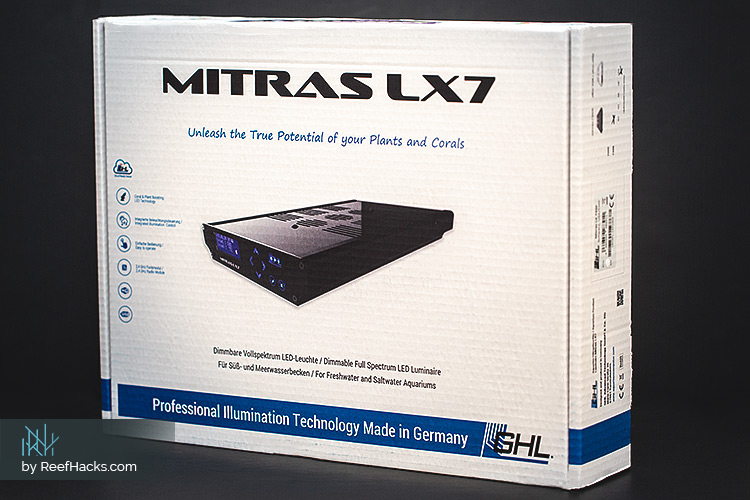Standing on the shores of the vast ocean, my eyes stung from the intense tropical sun. Reaching for my sunglasses, I felt the warmth of our star as I silently appreciated its brightness.
After a seemingly unending winter of gray skies and frigid temperatures, basking in the warm caress of our star was a welcomed reprieve. Burying my toes in the hot sand, my mind drifted beyond the water surface and into the universe I’ve come to cherish.
My mind swam past its inhabitants and into the colorful realm of coral reef cities. No matter how much I learn about these brilliant creatures, I can’t help but pause at the intricacies of its existence.

Author:
As a lifelong aquarist, Yuliya has an endless curiosity about our underwater universe. After graduating with a bachelor’s in Environmental Engineering, she transformed her passion into a successful career. While working at the Institute of Environmental Protection in Moscow, her passion for saltwater and reef aquariums only increased. Moving to the United States in 2013, Yuliya embarked on another impactful journey by sharing her unprecedented experience for all aquarium hobbyists ... Read More.
As a professional reefer, it’s humbling to think about the perceived effortlessness of nature. What took years of study and countless trial-and-error to learn, nature accomplishes without worry.
Drifting deeper in thought, a spark of realization shined from within.
Harnessing the effortlessness of nature is the ultimate reefer goal. Regardless of goals, we want to stimulate growth and life within our self-contained ecosystems. Consider the latest reefing technologies.
The evolution of technology is slowly inching closer to capturing the true essence of the natural world, which is one with minimal human intervention.
Don’t get me wrong, tending to our reef tanks is, for many hobbyists, part of the enjoyment.
I’m not speaking about a 100% hands-off reef tank, but rather, one powered by humanity’s growing knowledge of how the natural world works (and simplified with the help of technology).
Few reefing topics demand such an evolution as lighting.
Replicating the life-giving spectrum of natural sunlight isn’t as simple as turning on your bathroom light. From complex illumination schedules to precise PAR levels, reef tank lighting requirements have dimmed the excitement of this hobby for millions of aspiring reefers.
So, how can you effectively hack tank lighting without dimming the health of your coral?
The answer may surprise you.

Mitras LX 7 LED Fixture - Illuminating the Path to Coral Brilliance.
Assimilating nature with technology is a longtime dream of reefing equipment manufacturers. Until recently, the potential of this marriage remained hidden in the shadows of dreams.
However, the release of advanced LED lighting fixtures slowly began revealing the true potential of “smart” lighting.
While the current marketplace offers a growing list of high-tech LED lighting systems, few offer the efficiency and brilliance of the Mitras LX7 LED fixture by GHL.
If you’re familiar with its celebrated predecessor, the Mitras LX6 Series, then you already know how this brand has elevated tank lighting capabilities. Using the LX6 as the foundation, GHL did what few companies successfully accomplish. They enhanced an already robust system.
After first learning of the Mitras LX7, the entire Reef Hacks team couldn’t wait to get our hands on the latest incarnation of the Mitras LED series.
What are our thoughts?
Simply put, the LX7 series isn’t simply a repackaged version of the LX6. Its innovative features and refined approach to lighting management is exactly what we look for in an advanced LED fixture.
In fact, we liked it so much, that we got a second one!
We’ve investigated many lighting fixtures, but few deliver the quality, ease and accuracy as the Mitras LX7. Our 48” shallow frag tank (50 Gallon Low Boy) runs two LX7 fixtures, and let me tell you, it’s surpassed our expectations. In this setup, we run a super simple lighting schedule, 8 hours at 100% on all channels with 2 hours ramp and 2 hours down phase for a total of 12 hours a day , manipulating its operation schedule is a breeze.
So, what about the Mitras LX7 did we find so enjoyable? Well, dear reader, let me tell you…

The Difference is in the Details - Mitras LX 7206 Overview.
Before swimming throughout its myriad of features, let’s briefly dive into the basics.
As stated earlier, the LX7 series is the latest version after its popular LX6 product line. There are two options available:
- LX 7206 - Saltwater Configuration
- LX 7006 - Freshwater Configuration
Obviously, this review discusses the 7206 saltwater configuration, but from what I’ve heard from freshwater aquarists, the 7006 version is just as impressive.
A hallmark of its design is its LED technology. Outfitted with 72 individual LEDs scattered throughout a 9-channel array, the LX7 definitely delivers in terms of lighting power. Even though the LEDs are specially selected for its high-power output, they don’t have much influence on water temperature (i.e., minimal heat release).
While LEDs are notoriously cooler than other lighting sources, don’t assume its completely heat-free.
An excellent example is when illuminating SPS corals, which I recommend running High Output (HO) energy mode. The LX7 supports accessing full power in HO mode. While it has a default max temperature monitor of 60-degrees Celsius, pay attention to its internal temperature.
If you notice that its internal temp hovers close to 60-degrees Celsius, consider increasing the limit to 65-degrees (go to ENERGY SETTINGS menu to make adjustments).
On the other hand, a mixed reef aquarium works best with a High Efficiency (HE) operational mode. With this energy setting, LEDs are capped at 70% of its maximum output, regardless of your light schedule.
The design and placement of the six LED cluster groups is one of my favorite features. Not only does this layout support even light distribution, which we’ll cover later, but replacing LEDs is surprisingly easy.

The Communication of the Future - Connectivity Options and Features.
Depending on who you ask, the connectivity options of the Mitras LX7 is its coolest feature. Wired and wireless connectivity isn’t necessary new. In fact, the latest versions of many reefing tools are integrated with some sort of network connection system. However, not very many offer the ease and flexibility as the LX7 fixture.
In brief, connectivity serves as the support crew for managing and monitoring the LX7. On the side of the actual fixture, GHL has placed a side-display which provides quick access to basic settings and light status. This touch panel also provides owners with the option to make minor adjustments, such as slave/master mode and maintenance settings.
With our frag tank light settings being pretty straightforward, we were able to create our schedule using only the LX7’s side-display. Had we needed to create more complex lighting schedules, we would have been able to use the other connectivity options offered by GHL:
· GHL Control Center (PC software).
· GHL Control App (mobile control, isn’t that cool?!).
· myGHL cloud.
· GHL Web Interface (the newest evolution of remote access).
Not only does connecting and accessing the remote interface offer greater options, but it’s easier to understand each setting. In my experience, once you learn how to use the online control options, it’s far easier to accurately manipulate even the most complex lighting schedules/settings.
The only hiccup is that GHL does not offer a MAC compatible version of GHL Control Center. Although this only affects a portion of reefers, in my opinion, it’s strange to have an advanced interface limited to PC/Windows.
Fortunately for MAC owners, the LX7 provides other connectivity options outside of their PC software. MAC owners will still be able to access and setup more intricate lighting schedules using the GHL Connect app and/or web interface. For quick adjustments, there is also the side-display.

The Reflection of Living Light - Mitras LX7 Reflector Breakdown.
As mentioned earlier, the originating light source are six LED clusters. However, if you’re astute with your observation, you’ll notice a complete lack of optics.
This is intentional.
The quality of light isn’t specific to just spectral illumination. In fact, without efficient reflectors, the impact of even the greatest LEDs would be lackluster.

Considerably the most important feature of a reef lighting fixture, reflectors have the responsibility of blending and directing as much light as possible into the water. So, how does the Mitras LX7 compare to others? Let’s just say, exceptional is an understatement.
The unique reflector design and material reflects a staggering 99% of emitted light into the tank. Combined with its precise ability to blend the 9 LED colors in an evenly distributed band, the LX7 minimizes potential coral harm, while maximizing coloration and growth.
By avoiding optics, the LX7 reduces the risk of hotspots, which can literally burn coral. This is a serious issue, especially for SPS tanks with High Output lighting requirements. Essentially, the LX7 offers greater light output without greater risk of harming your beautiful coral.
The New Era of Reef Tank Lighting - Noteworthy Features.
When preparing my review, I realized there’s simply too many features and advantages to list in a single article. So, instead of penning an uncomfortably long review, here’s a brief rundown of the most impactful features.
Light Coverage.
Not only does the Mitras LX7 evenly distribute light, but its coverage area is equally as impressive. On average, a single fixture offers 36” x 24” of light coverage. The precise layout of the six LED clusters prevents gaps in coverage, known as light output gaps.
Photograph Mode (seriously, this is real).
I can’t tell you how frustrated I get when trying to photograph the beauty of my reef tank, but the resulting image is distorted due to LED lighting bands. So, it should go without saying, that the LX7 Photo Mode was the first feature I couldn’t wait to try. When activated, the fixture reconfigures the LED pulse rate to prevent its light bands from being captured on film. This is seriously one of the coolest features I’ve ever seen in a tank lighting fixture. Here are some example of my new frags shot under Mitras LX7 – Click on the image to open a full size photo:




Built-In WiFi.
Unlike other systems, which require additional tools or modules to connect with cloud-based platforms, the Mitras LX7 cuts out the middleman. The LEDs are actually outfitted with WiFi connectivity, which means connecting the fixture to the myGHL Cloud is essentially effortless.

The Brighter Future of Reef Tank Lighting - Final Thoughts.
From its simplified connectivity options to its safety-first thermal management system, the Mitras LX 7206 LED Fixture is truly an impressive device. Throughout my time working with the LX7, I remembered why GHL continues to be one of the most sought after suppliers.
What’s your experience with the Mitras LX7? Have you used its predecessor and are thinking of upgrading Let us know by visiting our Facebook Page!
On behalf of the entire Reef Hacks team, Happy Reefing!
by Yuliya Ivanova for ReefHacks.


